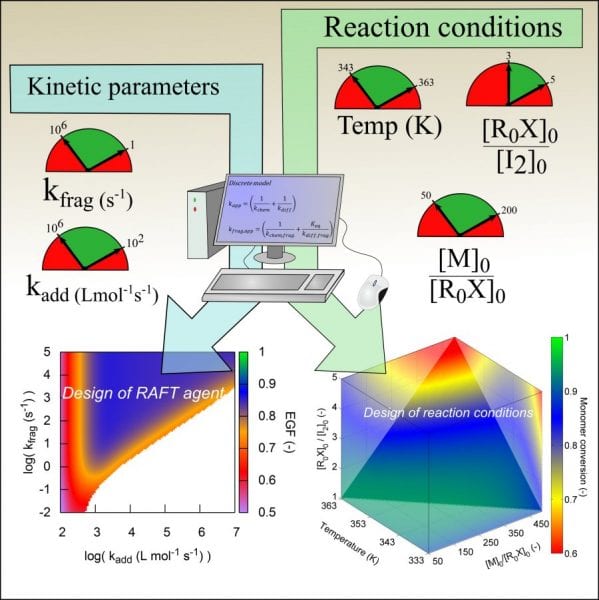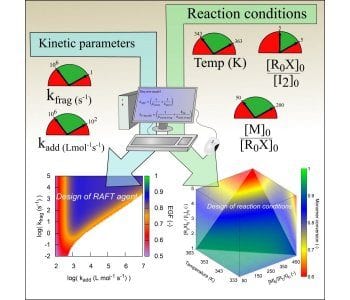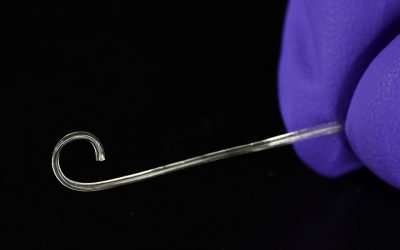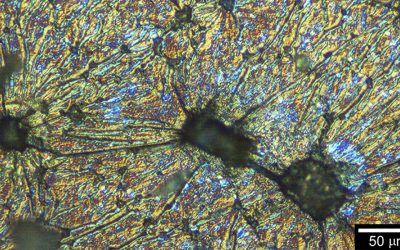 Reversible addition fragmentation chain transfer (RAFT) polymerization is one of the most promising polymerization techniques for the synthesis of well-defined macromolecular architectures and can be applied to a wide range of monomers.
Reversible addition fragmentation chain transfer (RAFT) polymerization is one of the most promising polymerization techniques for the synthesis of well-defined macromolecular architectures and can be applied to a wide range of monomers.
A team led by Dagmar R. D’hooge (Ghent University, Belgium) and Christopher Barner-Kowollik (Karlsruhe Institute of Technology, Germany) provide a timely overview on state-of-the-art kinetic modelling of reversible deactivation radical polymerization processes for the design of well-defined polymer products with a controlled chain length and composition, containing functional groups that can be used in a plethora of high-tech applications. They specifically focus on the addition fragmentation chain transfer (RAFT) polymerization in which the microstructural control is governed by a chain transfer agent capable of temporarily deactivating macroradicals. The RAFT polymerization technique allows microstructural control for a wide range of monomers and offers industrially relevant reaction times, making it a promising technique for future innovations in polymerization processes.
In order to fully exploit the potential of the RAFT polymerization technique and to gain a complete mechanistic understanding of this technique, kinetic modeling is an indispensable tool. The authors provide an overview of the main modeling techniques that have been developed in the past two decades to allow for model-based design of RAFT polymerization. In addition, a novel fundamental approach is introduced to account for viscosity effects on the core RAFT exchange process so that a reliable design can be achieved over the complete range of RAFT polymerization conditions and up to high monomer conversions.
Several case studies are included to further highlight the strength of simulations in combination with experimental research. These case studies include the design of the RAFT polymerization conditions for a given RAFT chain transfer agent and vice versa. Guidelines are formulated to minimize experimental efforts in the exploration stage of future novel RAFT polymerization systems.

















